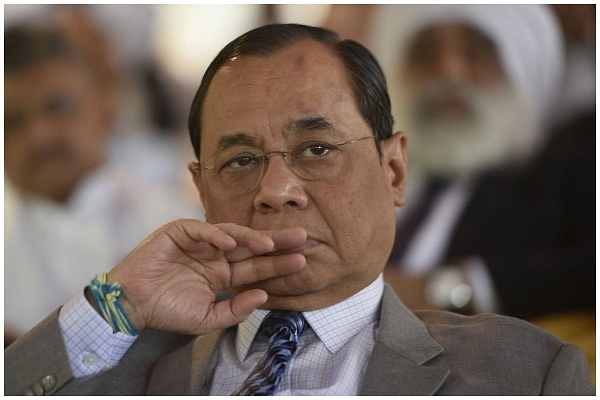
Ayodhya Bench: Is CJI Ranjan Gogoi’s Choice Of Judges Inspired Or Risky?
By choosing four future CJIs apart from himself, Justice Gogoi has ensured that all of them will have to take moral responsibility, even in case of a split verdict.
Chief Justice of India Ranjan Gogoi’s creation of an entirely new five-judge bench to hear the Ayodhya case from 10 January was not only unexpected but constitutes a huge risk. Depending on its final verdict, the choice of judges on the bench, which includes himself, and four future chief justices, SA Bobde, NV Ramana, UU Lalit and DY Chandrachud, amounts to needlessly raising the stakes for everyone concerned: the Hindu groups who want a Ram Mandir built on the Janmabhoomi, the Muslims groups who oppose it, and the judiciary itself.
Consider the huge break from precedent the CJI has chosen to make, especially in the context of the fact that he was one of the four senior judges who, last year, addressed a press conference complaining that the then CJI (Dipak Misra) was arbitrarily assigning cases according to his own judgment, and that seniority was important in judging who should head key benches. The four senior judges included Justices J Chelameswar, Madan Lokur and Kurian Joseph apart from Gogoi. They wanted a panel of senior judges to allocate cases to benches.
We do not know if CJI Gogoi informally consulted the senior-most judges before constituting the Ayodhya bench, or decided to follow the judgment of another bench that held the CJI was master of the roster, the final authority on which benches will be set up and with whom. What is also fairly unprecedented is that the new bench has no member from the previous three-judge bench, which decided to treat the issue as a property dispute, and rejected the idea of a larger five- or seven-judge bench to decide issue.
In plain words, the CJI has ignored the orders of the previous Ayodhya bench and decided to do his own thing.
This, in itself, would not be a problem except for the fact that by choosing four future CJIs apart from himself to decide the case, he has ensured that all of them will have to take moral responsibility even in case of a split verdict. As one of the most important cases heard in judicial Indian history, the Ayodhya verdict will impact political unity and religious amity, and depending on how the five judges voted, they will be defined by their judgments for the rest of their tenures.
It is not clear if this is a good thing or a bad thing for a new CJI to start with the weight of a previous major decision as his defining identity.
If CJI Gogoi had gone purely by seniority, Justice Arjan Sikri (number two after Gogoi) and Justice Arun Mishra (number five in the pecking order) would have replaced Justices UU Lalit and Chandrachud, who come way down at numbers nine and 11.
The other problem areas in CJI Gogoi’s selection are the following.
One, by not including any of the previous two judges who were part of the earlier Ayodhya bench, Justices Ashok Bhushan and S Abdul Nazeer, Gogoi has ensured that the new bench will have no legacy member, someone who has already heard some initial arguments of the parties concerned. This may be a good thing, but it also means that more time will be needed to hear all the arguments again.
Two, the fact that there is no Muslim member, or even a member from the minority community (Justices Rohinton Nariman and KM Joseph were possibilities), on the bench is also problematic, and the Muslim groups are already flagging this as a serious omission.
However, it is the Hindu groups that should be worried. This absence of a non-Hindu judge essentially puts the onus of proving fairness on five Hindu judges, and one wonders if they can easily transcend their identities to look only at the law while delivering their judgments. In the Sabarimala case, we saw how four male judges felt the need to wear their gender equality opinions on their sleeves, while the sole woman judge, the dissenting judge, saw no need to prove her feminist credentials.
If the five Hindu judges on the Ayodhya bench feel the same burden of need to live up to political correctness in order to transcend their religious identities, it is an unfair burden to cast on them. It would be the equivalent of asking an all-woman bench to decide Sabarimala. This is not to say that the bench will look at anything other than the law while deciding Ayodhya, but optics do matter. If the verdict were to go against the Muslims, the judgment will look biased to many people. CJI Gogoi should have considered this reality.
Depending on the nature of the final verdict, which will have to come before CJI Gogoi retires in mid-November this year, the choice of bench judges may well be seen – in hindsight – as either extremely inspired, or a monumental mistake.